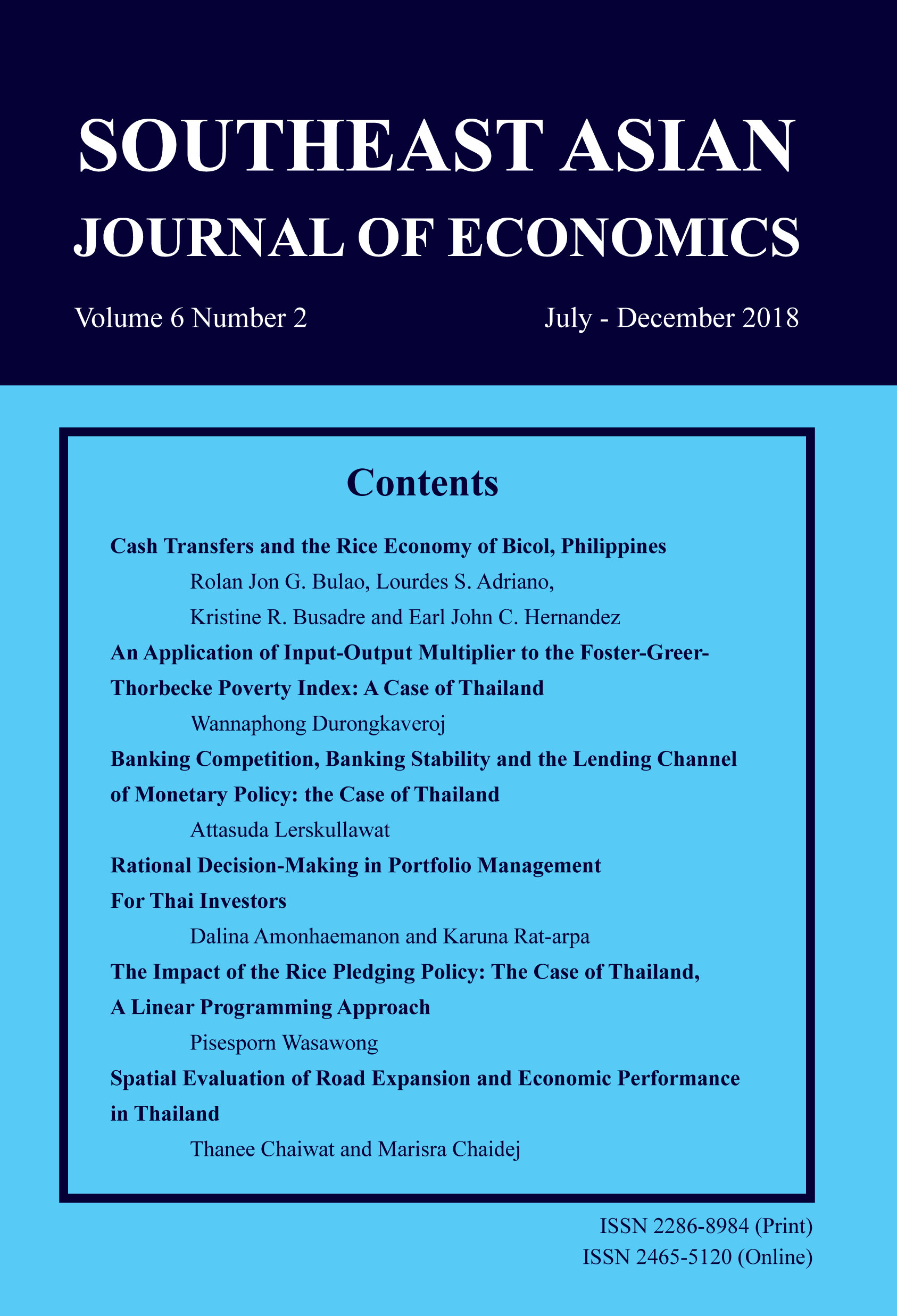The Resilience of the Thai Economy: An Analysis on Output Losses after the 1997 Crisis
Keywords:
Output Loss, Total Factor Productivity, Macroeconomic PolicyAbstract
1997 crisis considered as a shock in the business cycle for Thai economy should temporarily slow down the economic prosperity and then once it bounced back, the same long-term trend was expected, but such circumstance has never been observed. Despite the economic recovery led by the vigorous contribution of exports, output loss has been realized. Various factors in post crisis condition such as internal and external stabilities, or even financial expansion are examined with the application of simple OLS regression. The results show that the collapse in both investment and total factor productivity estimated by Solow's residuals are the causes. Reasons behind these slumps are the fact that both private and public sectors hesitate to invest. Furthermore, financial institutions become more conservative and firms are deleveraging to prevent bankruptcy. Political instability also hurt Thai competitiveness. This paper also utilizes data from 1980 to 2010 annually in the series of vector autoregression models creating the spectrum of impulse responses from 1990 to 2020 and finds that investment expenditure and total factor productivity enhancement are the main drivers to pave the resilient paths. Right strategies have to be carefully implemented to promote capital spending of the society as crowding-in effect from infrastructure establishment is needed. Restoring another engine of growth, rather than export dependence, is achievable.
Downloads
How to Cite
Issue
Section
License
The submission of a manuscript implies that the paper is an original work and has not been published elsewhere. The author(s) authorize the journal to reproduce or distribute the paper in printed or other electronic forms.







